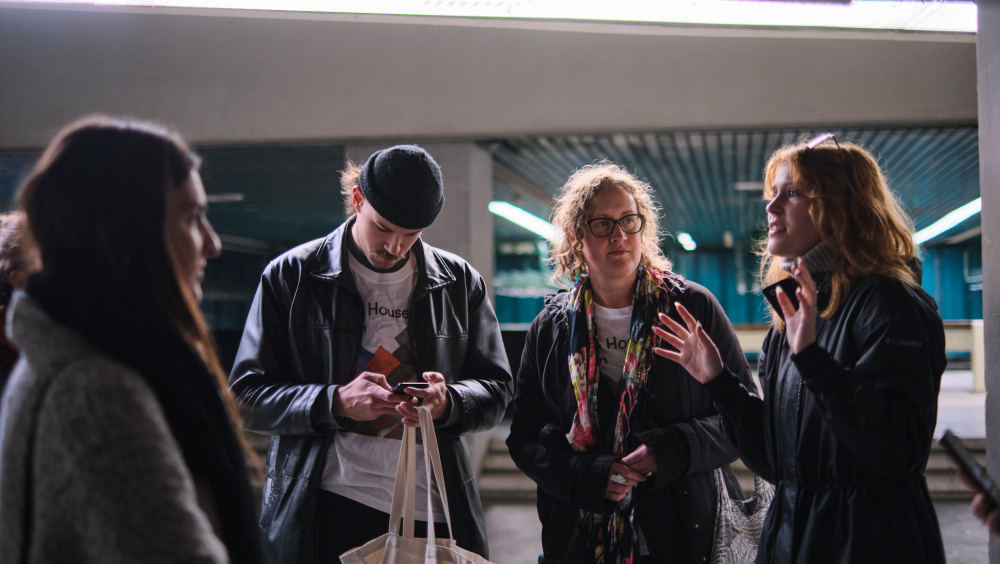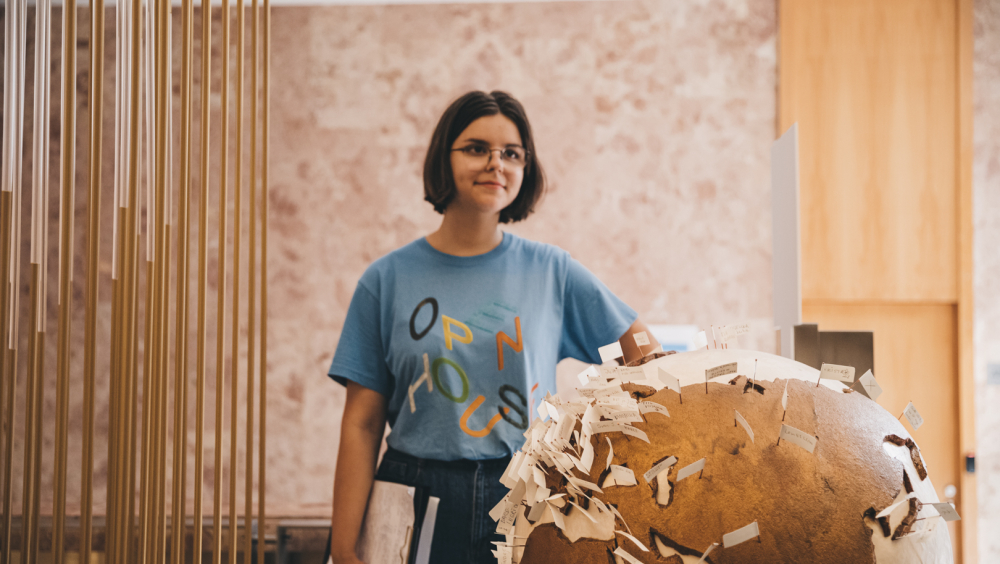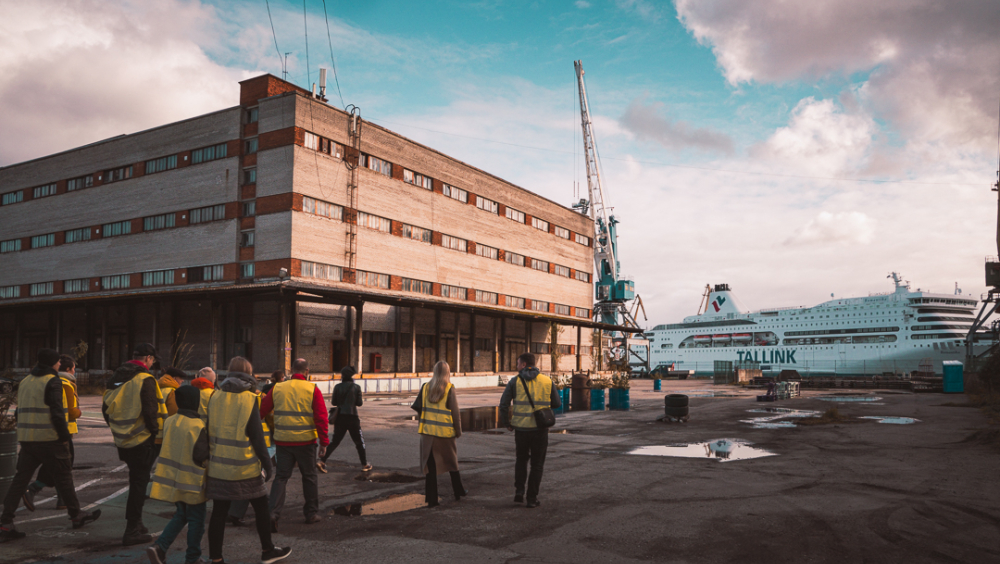Open House Tallinn – An Inclusive Journey Through Architectural Heritage
Open House Tallinn is an annual architecture festival that fosters a deeper connection between people and their urban environment by opening doors to some of the city’s most remarkable buildings. The event invites the public to explore Tallinn’s architectural heritage through guided tours.
Over the years, Open House Tallinn has evolved into a platform for inclusivity, education, and collaboration. By offering tours in multiple languages, including Estonian Sign Language, the event ensures accessibility for diverse communities. A strong volunteer network plays a key role in shaping the experience, with nearly 200 passionate individuals leading tours and engaging the public in discussions about architecture and urban planning.
Beyond guided tours, Open House Tallinn fosters partnerships between institutions, professionals, and cultural organizations, encouraging dialogue on the significance of architecture and urban development. These collaborations introduce fresh perspectives and highlight the interdisciplinary nature of city planning.
More than just a local event, Open House Tallinn contributes to a broader European cultural exchange, participating in international volunteer programs and strengthening connections with Open House events across Europe. By making architecture accessible and inspiring curiosity, the festival plays a vital role in raising awareness about heritage, history, and culture for all communities and age groups
Long Description:
An environment where culture inspires is where society thrives. This story follows a project that began as an initiative to bring architecture closer to the general public and has evolved into a significant and empowering movement. Open House Tallinn was founded on the idea of creating a stronger connection between people and their urban environment. One of the most effective ways to achieve this is by providing accessible opportunities for people to learn about their city through guided tours of architectural landmarks. By opening doors to spaces usually closed to the public, Open House Tallinn offers an immersive experience, allowing visitors to engage with the elements of architectural heritage firsthand.
One of the popular sites featured in the event is Tallinn City Hall, built in 1980. Designed to host major concerts, celebrations, and official receptions, its architecture is a masterpiece of symmetry and mathematical precision, inspired by the temple designs of ancient Mesopotamia and Egypt. With a total length of nearly 300 meters and a width of 160 meters, the building is an outstanding example of postmodern architecture. Although it is no longer regularly open to the public, Open House Tallinn offers visitors the rare opportunity to explore its grand interiors and unique architectural features.
Two fundamental pillars of Open House Tallinn are inclusivity and raising awareness of architecture. The event embraces diverse communities, ensuring a broad and meaningful impact by making architecture accessible to all. In addition to offering tours in Estonian, English, and Russian, recent editions have expanded inclusivity efforts, such as introducing tours in Estonian Sign Language to better serve the deaf and hard-of-hearing community. Programming variety has allowed adults, the elderly, youth, children, families, and persons with disabilities to participate, inspiring them to engage with Tallinn’s architecture and urban spaces. Through this exposure, participants absorb knowledge about design, history, and the stories embedded in the built environment. By fostering curiosity and appreciation, Open House Tallinn contributes to a more culturally aware and creative society, both in the present and for the future.
While the public impact of Open House Tallinn is significant, its collaborative nature adds even more value to the initiative. The built environment is shaped by many contributors beyond architects—geographers, engineers, lighting designers, urban planners, universities, museums, and government entities all play a role in shaping cities. Open House Tallinn serves as a platform that brings these lesser-known voices to the forefront, enabling them to share their expertise and insights with the public. The event has facilitated collaborations with a diverse range of professionals, including urban researchers, government initiatives, and even an orienteering club, creating engaging activities that introduce new perspectives on architecture and urbanism.
Starting from integrating into the curricula of the Estonian Academy of Arts up to creating descriptive tours for the visually impaired, there are many applications of collaboration.
One example of this collaborative spirit is the partnership with the Association of Estonian Lighting Designers, who invite visitors on a guided walk through Tallinn’s urban spaces to explore the role of lighting in architectural design. The tour goes through the Old Town, and participants observe how well-placed lighting enhances historical heritage, improves street safety, and fosters a welcoming atmosphere. Through these initiatives, Open House Tallinn not only educates the public about architecture but also introduces interconnected disciplines that contribute to the experience of urban spaces.
Engaging the volunteer community is another cornerstone of the event. Open House Tallinn is powered by nearly 200 dedicated volunteers, who lead tours and provide visitors with insights into the city's architecture. Volunteers are passionate about culture and design, and their enthusiasm spreads to participants, creating a sense of shared excitement. This spirit of volunteerism extends beyond the event, strengthening the broader heritage and cultural sector. Many volunteers go on to contribute to other heritage initiatives, amplifying the impact of Open House Tallinn beyond its immediate scope. The inclusivity of the volunteer program extends to multiple communities and minorities—one year, even stationed British NATO soldiers joined the team, conducting tours in English, showcasing the truly diverse nature of the initiative.
Since 2023, Open House Tallinn has participated in the Open House Europe volunteer exchange program, fostering connections among Open House volunteers across the continent and giving them the opportunity to explore and engage with architectural heritage across borders. This initiative enhances cross-cultural learning and promotes a shared European architectural heritage, reinforcing the event’s significance beyond Tallinn.
The impact of Open House Tallinn is evident in the numbers. In 2024, the event attracted over 9,000 participants eager to explore architecture and architectural heritage. Feedback from attendees reveals that more than 95% learned something new about the city, and 79% reported feeling more confident discussing urban landscapes and architecture. These statistics demonstrate that Open House Tallinn is not only an event but also a powerful educational tool that fosters awareness, engagement, and community-building.
Open House Tallinn exemplifies the power of inclusive, collaborative, and knowledge-driven cultural events. By opening doors to the city’s architectural treasures, the initiative inspires curiosity, strengthens community connections, and promotes appreciation for the built environment. Raising awareness about architecture and urban heritage is essential for shaping informed, engaged, and creative societies. Open House Tallinn proves that cultural events can be transformative, bridging gaps between people and their surroundings, and ensuring that architectural heritage remains a living, accessible part of our collective experience.
Open House Tallinn embodies the principles of European heritage by fostering inclusivity, collaboration, and cross-cultural exchange through architecture. As part of the wider Open House network, the event actively engages with European cultural initiatives, strengthening connections between communities and professionals across borders. Through the Open House Europe volunteer exchange program, young participants gain the opportunity to explore architectural heritage in different European cities, fostering a deeper understanding of shared urban history and design principles.
Cultural diversity and accessibility are at the heart of Open House Tallinn. The event ensures that people from all backgrounds—regardless of age, language, or ability—can participate in discovering Tallinn’s built heritage. Tours in multiple languages, including Estonian Sign Language, and collaborations with various cultural institutions enhance accessibility, reinforcing the European values of inclusion and democratic participation in cultural life.
Collaboration is another key element of the event, with Open House Tallinn bringing together architects, urban planners, lighting designers, universities, and government institutions. By showcasing how different disciplines contribute to shaping cities, the event encourages dialogue on urban planning and sustainability—challenges shared by many European cities. This interdisciplinary approach highlights heritage as a resource for innovation, rather than just a preserved past.
More than just an architectural festival, Open House Tallinn strengthens cultural cooperation by engaging local communities in an active learning experience. Volunteers play a crucial role in leading discussions, creating an environment where knowledge is not only shared but also exchanged between visitors, experts, and institutions. This participatory model reflects the broader European vision of heritage as a collective experience that unites people through culture, history, and design.



